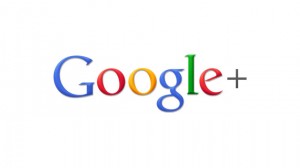 Google+—Yes, it still exists. You might have forgotten about the social networking mega giant that’s since flopped a bit, but that doesn’t mean it’s not still ripe for the picking, and ready to be integrated into all of your upcoming web design projects. We know you aren’t convinced you need Google+, but fear not, you skeptic designer you! We’ve got our justifications, our tips, and our logic all spilled out below, ready for you to sift through.
Google+—Yes, it still exists. You might have forgotten about the social networking mega giant that’s since flopped a bit, but that doesn’t mean it’s not still ripe for the picking, and ready to be integrated into all of your upcoming web design projects. We know you aren’t convinced you need Google+, but fear not, you skeptic designer you! We’ve got our justifications, our tips, and our logic all spilled out below, ready for you to sift through.
For our full thoughts on how to make the most of Google+ in your designs, check below!
What is Google+ and Why Should I Care?
First of all, we suppose it might do some good to clarify what Google+ actually is: If you missed the service’s launch, Google+ is more or less the Big G’s answer to sites like Facebook or Twitter. It offers a lot of the same functionality as other social giants (Facebook, Twitter, even Reddit) allowing users to share posts, comment on shared media, and just generally ham it up.
Google+ (Which, by the way, can also spelled in the more traditional style as “Google Plusâ€) offers a few new innovations, most notably a revamped albums compendium that has the pants beat off of Facebook. There’s also the option to +1 a post that’s been posted to your feed. This is most similar to the Reddit up-vote, which heaps importance onto that post, and bumps it further up in other user’s feeds. This is what’s most important to us as designers, and this is where we’ll be placing most of our attention.
The Button, +1
Whether you use Google+ yourself or not is almost irrelevant: Either way, you’ll want to add a Google-sponsored +1 button to your pages and posts. Why? Because there are die-hard Google fans out there just waiting to add your content to their feeds. Remember that portfolio you posted to your website just last week? We’d be willing to bet £50 you added Facebook and Twitter integration buttons to it. Why not add Google+ to boot? It takes literally no time at all, especially as Google gives you the code, and with the realtime stream system Google+ is built upon, you’re even more likely to get noticed through the service than through Facebook and Twitter combined.

